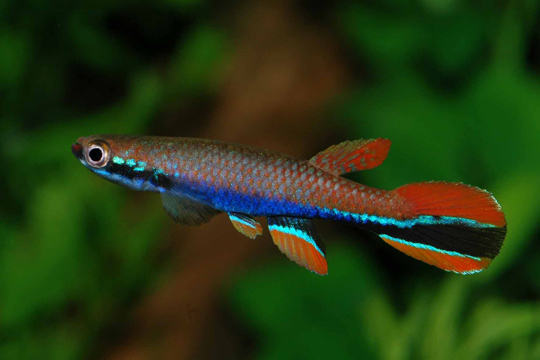Secondary forest.
Secondary forestation is common in areas where forests have been lost by the slash-and-burn method, a component of some shifting cultivating systems of agriculture. Secondary forests may also arise from forest that has been harvested heavily or over a long period of time, forest that is naturally regenerating from fire and from abandoned pastures or areas of agriculture. It takes a secondary forest typically forty to 100 years to begin to resemble the original old-growth forest; however, in some cases a secondary forest will not succeed, due to erosion or soil nutrient loss in certain tropical forests.
Below you see Rivulus xiphidius one of the species that could adapt to this environment.

Often these forests occur at places people have good access to. Sometimes the species that live there did adapt to the more sunny and open landscape, other species have problems to adapt and disappear or even change their behavior.
In Rivulus there are some groups that adapted better than others. One group that did so is the Rivulus urophthalmus group and the species like R. agilae, R. frenatus and Rivulus xiphidius.
In South America secondary forests are often open or bushy landscapes with the rivers and creeks exposed to the sun. Because of the open character creeks do have water plants in it that gives cover to many tetra's and other species of small fish. On those smaller fish, predators predate. For that reason, Rivulus species - which are relying on low number of eggs and offspring - would not be able to survive in this environment without special skills to develop.
The skills they developed are many but the 2 most important ones are:
a. seeking the outermost and flat areas of the creek or pool in particular the swamps aside and the thick layer of leaves or plants that from massive layers on the edges of the creek.
b. Jump out of the water on the surrounding vegetation or surrounding terrain if danger is present. This behavior is also seen if the species starts to "walk" over land to find remote puddles and rain pools where they live from crusteans and mosquito larvae.